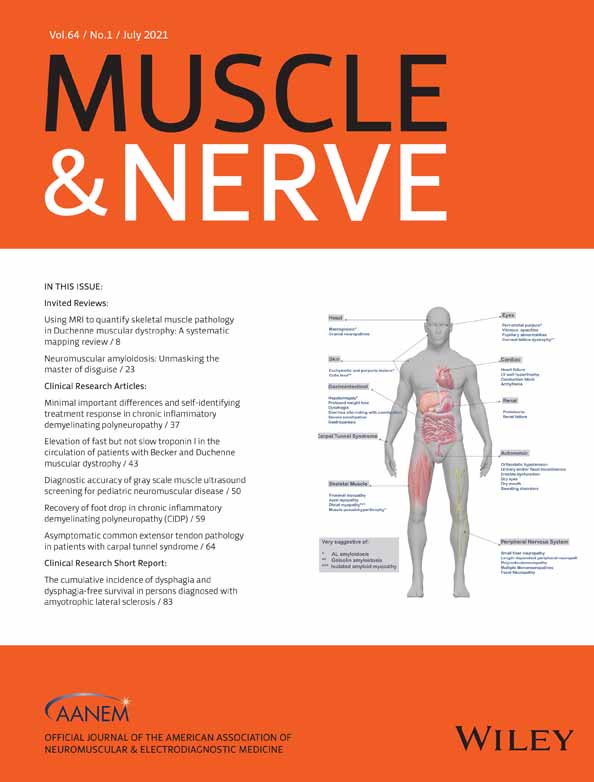Diagnostic accuracy of gray scale muscle ultrasound screening for pediatric neuromuscular disease
Statistical analysis was performed by: Juerd Wijntjes, Neurologist and Clinical Neurophysiologist, Department of Neurology, Radboud University Medical Center, Nijmegen, The Netherlands.
Funding information: Holmes Family Foundation; Mayo Clinic
Abstract
Objective
Gray scale ultrasound (US) has been demonstrated to be a sensitive and specific tool in the diagnosis of pediatric neuromuscular disease (NMD). With recent advances in genetic testing, the diagnostic work up for NMD has evolved. The purpose of this study was to compare the current diagnostic value of gray scale US to previously defined sensitivities and specificities to determine when this test can add value to a patient's diagnostic workup.
Methods
Standardized quantitative gray scale US imaging was performed on 148 pediatric patients presenting for electrodiagnostic testing to evaluate for NMD. Patients were categorized as having an NMD, a non-NMD, or as “uncertain.” The US results were defined as normal, borderline or abnormal based on echointensity values. Sensitivity, specificity, positive predictive value (PPV), negative predictive value (NPV), and accuracy of the test were calculated.
Results
Forty-five percent of the patients had an NMD, 54% a non-NMD, and in 1% the diagnosis remained uncertain. US was abnormal in 73% of myopathies, 63% of neuromuscular junction disorders, 60% of generalized neuropathies and 58% of focal neuropathies. After excluding patients in whom muscle US was not expected to be abnormal (eg, sensory neuropathy), sensitivity was 83%, specificity 79%, PPV 75%, NPV 86%, and accuracy 81%.
Conclusions
Quantitative gray scale muscle US still has good diagnostic value as a screening tool in pediatric NMD. As with any diagnostic test, muscle US is best used in conjunction with history and physical examination to increase specificity and diagnostic yield.
Abstract
CONFLICT OF INTEREST
Andrea Boon reports no disclosures. Juerd Wijntjes reports no disclosures. Travis O'Brien reports no disclosures. Eric Sorenson reports no disclosures. Meaghan Cazares Gonzalez reports no disclosures. Nens van Alfen serves as an ultrasound consultant for Dynacure; payment goes to employer.
Open Research
DATA AVAILABILITY STATEMENT
The data that support the findings of this study are available on request from the corresponding author. The data are not publicly available due to privacy or ethical restrictions.




